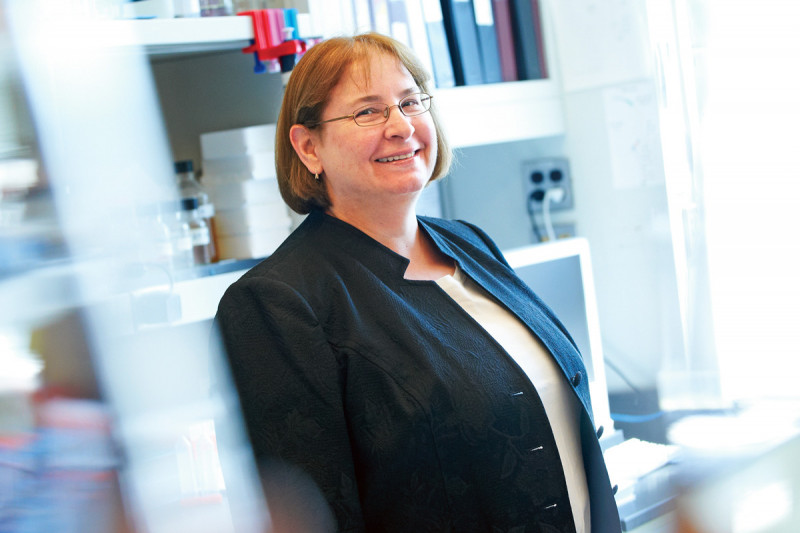
When chromosomes are copied and divided faithfully and no DNA damage is passed on, a parent cell gives rise to two identical daughter cells. But when mistakes occur, the genetic code contained on the DNA strands can become corrupted, leading to errors that change the behavior of cells and may ultimately lead to cancer.
A particularly dangerous type of DNA damage is called a double-strand break, in which the two antiparallel strands of the DNA double helix break in the same place, making it difficult for a cell to repair itself. One mechanism cells use to repair such breaks is called homologous recombination (HR). In this process, a cell finds a DNA sequence in the genome that resembles the sequence next to the break site and mends the break by copying that undamaged sequence.
Memorial Sloan Kettering developmental biologist Maria Jasin has devoted much of her career to the study of HR and its role in maintaining the integrity of the genome. Recently, Dr. Jasin and her colleagues published several studies that provide new insights into this biological process that is fundamental to life — from the birth of a new cell to sexual reproduction and fertility to aging — but can lead to cancer or other conditions when it malfunctions.
In a paper published in May in Cell, Dr. Jasin and her colleagues discovered a previously unknown role for BRCA2, a tumor suppressor protein that often is mutated in hereditary breast and ovarian cancers. About ten years ago, her group found that BRCA2 is important for repairing double-strand breaks that arise in the genome. [PubMed Abstract]
The new study shows that BRCA2 not only repairs DNA damage but also prevents DNA damage from occurring in the first place, in particular during DNA replication (the duplication of the genome prior to cell division). “This changes conceptually how we think about this and potentially other DNA ’repair’ proteins,” she says. “It’s important to protect newly synthesized DNA, and the lack of protection can give rise to genomic instability.”
A study published in March in Nature looks at a different aspect of DNA repair by exploring the role of proteins called ligases, which are important for gluing broken DNA strands back together. [PubMed Abstract] Previously, studies in mice had shown that one of the ligases, called ligase III, is essential for life. But scientists were uncertain why the protein is so critical.
Dr. Jasin and colleagues found that ligase III is important for cell survival because it’s the protein that repairs the DNA in mitochondria — the tiny powerhouses inside every cell that provide energy. “Damage to mitochondrial DNA is responsible for several human diseases,” she explains. Together with Memorial Sloan Kettering molecular biologist Stewart Shuman, Dr. Jasin reported that even a bacterial ligase can rescue the survival of cells, indicating that cells are not fussy about which ligase functions in mitochondria.
Another paper, published in Science in February and co-authored by another Memorial Sloan Kettering molecular biologist, Scott N. Keeney, looked at HR during meiosis. [PubMed Abstract] When cells called germ cells undergo meiosis to form sperm or egg, their chromosome pairs — in humans, one pair of sex chromosomes and 22 others — line up and split into two equal sets. HR plays an important role here because it holds both chromosomes of each pair together, so that in the end they split up correctly. For the sex chromosomes in males, half the sperm get the X chromosome and the other half get the Y. Females have it easier because they have two X chromosomes, which behave like all of the other chromosome pairs.
Until now, it was not known how the male X and Y chromosomes are able to undergo HR. The X and Y chromosomes differ in size and shape and only share a small region where they can pair up and swap DNA. The teams found that HR between X and Y chromosomes in mice occurs later than it does between the other pairs and uses a different mechanism to break their DNA strands to prepare for HR. Further studies show the protein SPO11a is required for X-Y HR, and absence of that protein leads to errors in recombination.
“These types of errors can cause human conditions with aberrant sex chromosome numbers,” Dr. Jasin says.
“I’m grateful to the Center for its support of my research,” she concludes. “The research environment here is truly extraordinary.”